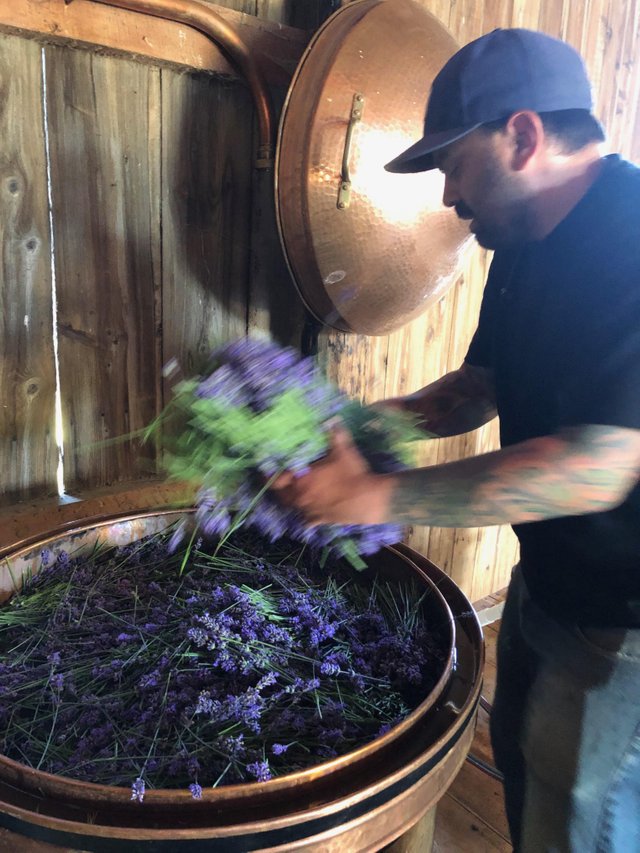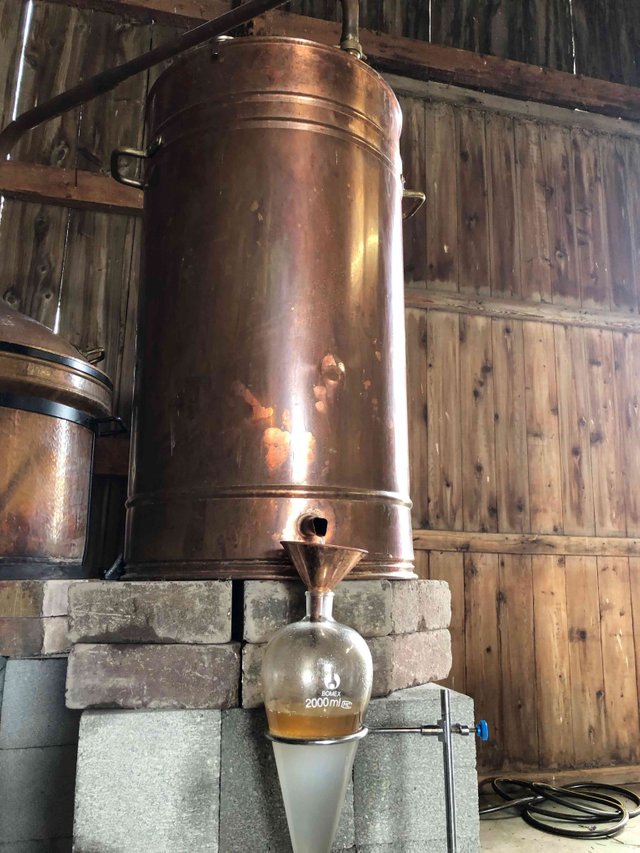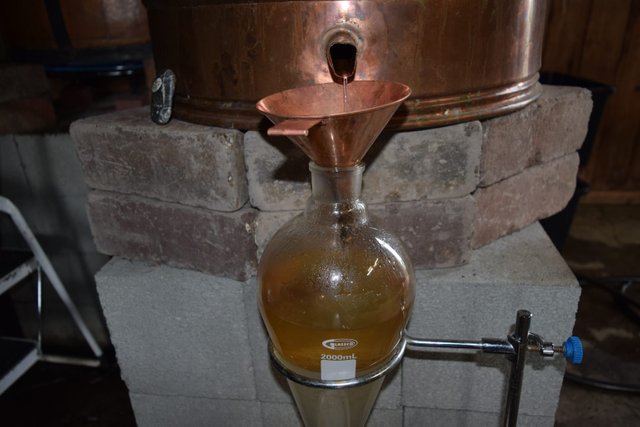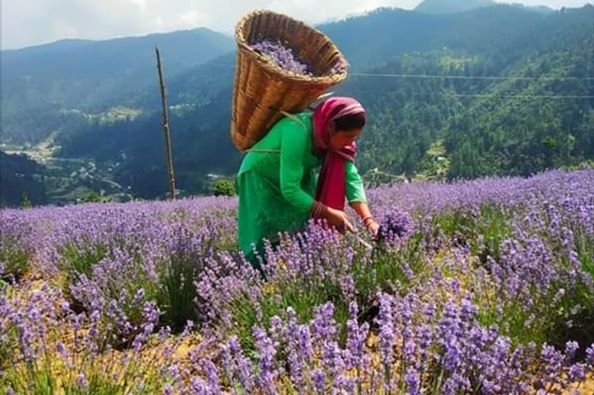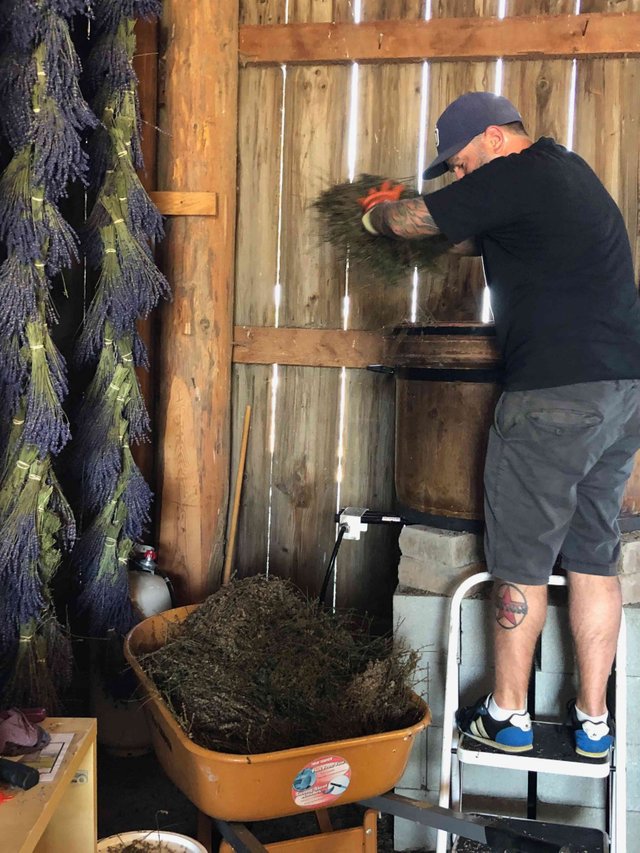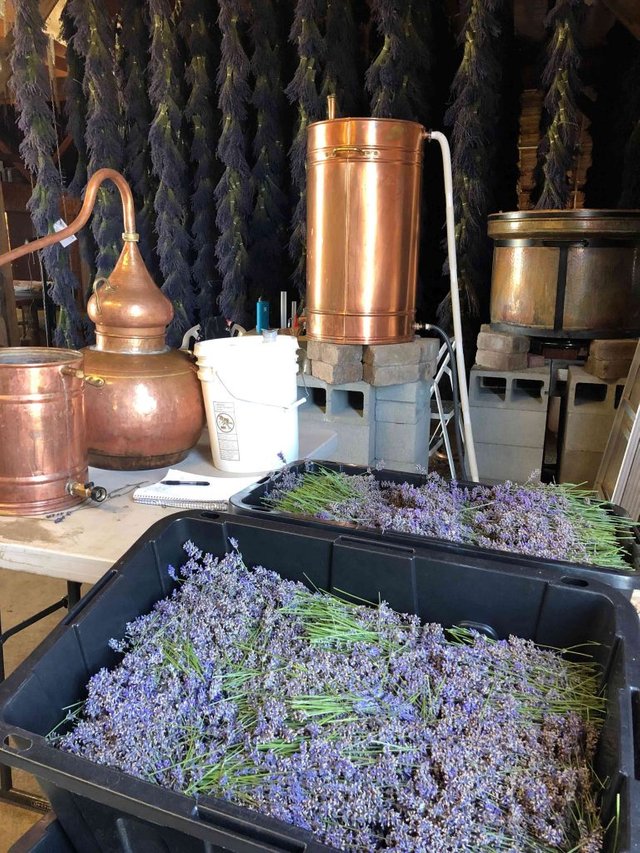
source
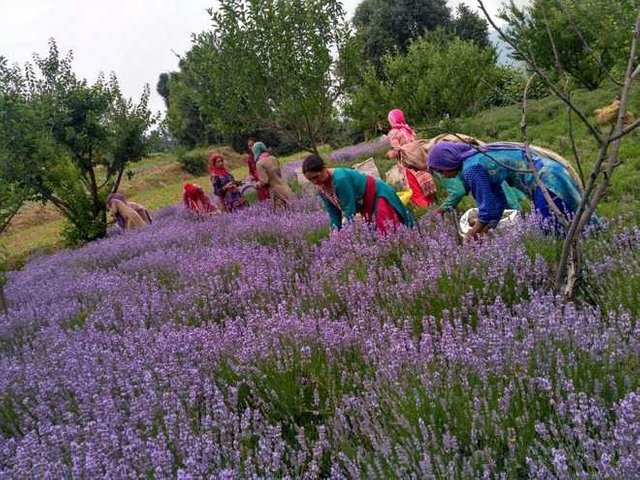
source
So how would we distil lavender essential oil? Have you at any point steamed vegetables previously? Well on the off chance that you have, odds are you can distil lavender to remove its essential oils.
Similar as heating a wonderful cake, there is an inclination to take a gander at the completed item and ponder the excellence of the completed item and disregard the science behind what occurred in the broiler. we frequently hear my kindred lavender ranchers and distillers allude to essential oil distillation as a workmanship. While there is some inventiveness associated with the interaction, distillation should fall inside specific boundaries to get an optimal item. This is the reason I would contend distillation is even more a science. Likewise the distiller has little power over the compound cycles inside the pot whenever distillation has begun. Along these lines realizing the science is a large portion of the fight! In this way, here we go.
Lavender essential oil distillation occurs through a cycle called steam distillation or at times wet steam distillation. Regardless the cycle is practically the same. To begin with, take a pot or pot and you put a steam plate an inch or two over the lower part of the pot (contingent upon the size of the still this could be many creeps on an even bigger). For our 60L still we sit our steam plate on 1 inch bits of copper pipe. For our 300L still our steam stray sits around a 10 crawls from the lower part of the still. Then, top the pot with water off to the steam plate line. All of the lavender will currently sit on top of this steam plate, the plate will hold the lavender back from contacting the lower part of the pot and consuming.
Now it is likely turning out to be all the more clear why I contrast refining lavender essential oils with steaming vegetables. Presently we have our pot with our steam plate on the base and the pot loaded up with water to the highest point of our steam plate. As you can find in the picture there is still a ton of room left in our pot. Next is the place where the lavender comes in.
Preceding setting up our still we will have to cut the assortment of lavender we will distil. For a 60L still we will require around 20-25 lbs of newly cut lavender. For our 300L still we will require 100-120 lbs of lavender. 20-25 lbs of new lavender is somewhere in the range of 6-12 full lavender plants relying upon the assortment, age, and soundness of the plant. We slice out lavender short to try not to pack in a lot of stem . We additionally cut our lavender a lot later in the year when the lavender is excessively ready and completely blossomed. At the point when the plant is completely blossomed is the point at which it has the most sum essential oil. We pack the lavender in the pot of the still on top of the steaming plate attempting to stay away from pockets of air between the lavender. It is alright to pack the still close, don't stress over stuffing the still. We fill the lavender right to the highest point of the pot. When we have the pot topped off we put the top of the pot on and associate the swan neck from the pot to the condenser and turn the hotness on under the pot.
Very much like steaming vegetables the general purpose of the refining system currently is to boil water and turn the water in the lower part of our pot from a fluid to a gas (steam) so it can rise and go through our pot that is presently loaded down with lavender. As the steam goes through the lavender the strain inside the fixed pot alongside the high temperature of the steam causes the bud of the lavender (the calyx) to deliver its essential oils.
Did you know? The bud of the lavender not the real blossom is the place where the vast majority of the oil is held in lavender.
The more modest pot that the enormous pot associates with is known as the condenser. The condenser is the place where the line holding the steam which contains the water and oil goes to chill. The line coils continuously down the condenser as you see above. The condenser is loaded up with cool water to cool the line containing the steam. This permits the steam to go from its gas state back to a fluid state. The water around the condenser coil warms up during this cycle so we have the boiling water exit out of valve on the highest point of the condenser. The heated water is supplanted by cool water that enters the lower part of the condenser pot. This permits the condenser to cool the steam slowly. After it chills off and turns around to fluid it dribbles out the finish of the condenser into our separatory pipe.
This might appear to be straight forward yet I address this is on the grounds that it is regularly misjudged. At the point when the oil and water emerge from the condenser into the separatory pipe they isolated. As the vast majority know oil and water don't blend, so this is not all that much, however what I frequently hear is oil skims on water since water is heavier, This is bogus. There are two motivations behind why the oil drifts on the water. In the first place, the dipole-dipole connection between the water atoms is a lot more grounded than any of the responses occurring between the oil and water so the oil won't pull the water bonds separated. Second is water is more thick not heavier than oil so the water sinks to the base. Moreover, the essential oil, similar to all oils, is hydrophobic.
The species Lavandula X Intermedia, lavindins, produce the most oil. Grosso which is the most widely recognized assortment of lavender, is one of the greatest oil makers. We get around 225-300 ml of oil for each clump for Grosso from 20-25 lbs in a 60L still. The species Lavandula Angustifolia now and again alluded to as English lavender is a low maker of oil. A few assortments produce more than others yet regularly we get 30-120 ml relying upon the assortment of Angustifolias. English lavenders produce the best essential oil. Lavandins have more camphor in their oil. Camphor is a similar aroma you find in vicks medicated ointment. Try not to let this divert you off from Grosso oil in any case, many individuals still truly partake in Grosso's aroma since it is the most normal fragrance of lavender. Grosso is the smell a great many people perceive as lavender. The English assortments have a lot better smell and are more wanted in the fragrant healing ,the aromatherapy field.
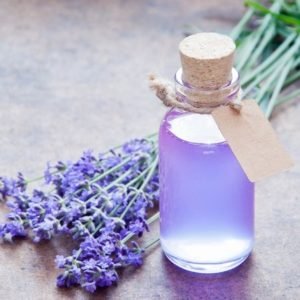
The lavender water that comes out with the oil is currently alluded to as Hydrosol. In the event that you put the right measure of water in your still (not all that much so you don't water down the hydrosol) you will get another helpful item, lavender hydrosol. You can dive your mind more deeply into hydrosol as it is diluted with water and oil. Hydrosol is utilized for eliminating cosmetics, body splashes, antiperspirants, material showers and so on We use it in our cloth shower that we sell here on our ranch.
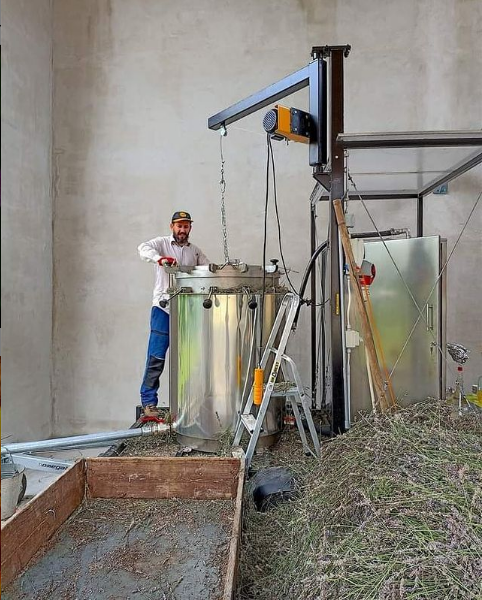
For what reason do we utilize Copper for distilling? As It's Science. We use copper since it permits us to give you a freshly distilled predominant smelling oil. An aroma in oil nobody truly focuses on is sulfur. You realize that spoiled egg or consumed match smell… Yeah we don't care for it all things considered. We need to ensure the sulfur smell is removed from the essential oils, in light of the fact that sulfur is in many plants in modest quantities. Luckily for us Copper atoms have a +2 ionic charge and Sulfate particles have a - 2 ionic charge, so the two components truly like one another and make an excellent blue green powder called copper sulfate. You can see the greenish blue-green blemishes as an afterthought and lower part of my still. It is effortlessly washed away with a little water.
Two or three notes that We cut our lavender for distilling when the lavender buds have completely bloomed which is the point at which the lavender buds have the most oil. We cut the lavender with off stems to get however much of the lavender blossom heads in the pot as could be expected We distil all of our lavender in our 300 Litre or 60L copper still.
Thank you for enjoying my blog......

